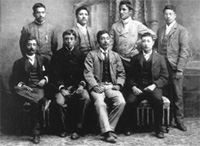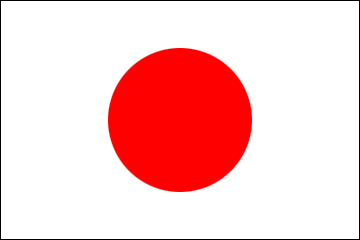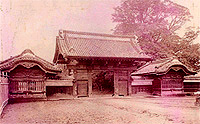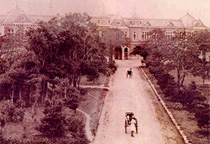Nepali Students in Japan - A Century Ago (1902-Meiji 35 Era)
2021/3/22
| In 1902 the Government of Nepal had decided to send eight Nepali youths to go to Japan for study. In order to avoid any inconveniences during their stay in Japan, seventeen attendants were also allowed to accompany the youths. The students, and the attendants who reached Japan on June 17, 1902 has been recorded as the first Nepali nationals to land in Japan. All expenditures for travelling, education and living costs in Japan were borne by the government of Nepal. Incidentally, these youths were also the first Nepali students to go overseas for study. |  |
||||||
| The students, who ranged in age between 18 to 27, left Nepal with their entourage and boarded the ship "Thomas Cook" on April 29,1902 in Bombay. En route, the ship halted at the ports of Colombo, Rangoor, Singapore, Hongkong, reaching Yokohama on June 17. The group stayed in Yokohama for a few days while Swami Giri, the guide, who was familiar with Tokyo, made arrangements for lodging. The students visited the British Legation with a letter from Prime Minister Chandra Shamsher Rana to the British Minister in Tokyo. As requested by the Nepali Prime Minister, the Minister wrote to Japanese Foreign Minister, Jutaro Komura on April 21,1902 requesting that the youths be allowed to enter colleges. He referred to the students as "state students" of Nepal. The Foreign Minister forwarded the letter to the Ministry of Education, and upon the recommendation of the Mombusho (Educational Ministry), the Nepali students were admitted into three government institutions - Teikoku Gakko, Kuramae Koto Kogyo Gakko and Noka Gakko in Komaba.
Among other efforts, they cast copper coins and manufactured some light ammunition. They also brought back seeds of Wisteria, Persimmon, Chestnuts, and Chrysanthemums, which were planted for the first time in Kathmandu. Due to some odd happenings, the situation of the former students changed dramatically some years later. The Prime Minister at that time began to suspect that the youths, particularly the ammunition engineers, might have some connection with a rival Rana group. The youths were not allowed to stay together and the main suspects were sent outside the Kathmandu Valley. It was Prime Minister Dev Shumsher Rana who planned to send Nepali youths to Japan. He learned a lot through books and people about the modernization programs of Japan since 1968, the famous Meiji Ishin, the government policy, Meiji Constitution and realized Japan was becoming a powerful nation in economy and national security. Dev Shumsher was every inch a democrat, convinced by the idea of constitutional monarchy and Parliamentary system. He saw Japan as his model. He chose an advanced Asian nation for learning probably because of some similarities between Nepal and Japan rejoining their cultural and then political situation. Unfortunately Dev Shumsher could not implement his plan during his very short period of 144 days rule. However, the next Prime Minister Chandra Shumsher Rana sent the students to Japan in April 1902. |
|||||||
>> What Nepalese Students Gain from Japan and Their Role in the Future |


